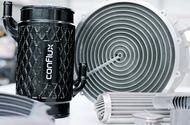How Is 3D Printing Transforming Intercooler Design in High-Performance Cars?
If you’ve ever peeked under the hood of a modern supercar, you know things are getting wild—and light. One of the most exciting shifts in recent years is the way 3D printing, or additive manufacturing (AM), is shaking up how we build critical engine components. Intercoolers, those unsung heroes that keep turbocharged engines breathing easy, are at the center of this revolution. But what’s really changing, and why does it matter for drivers and engineers alike?
What Makes the Donkervoort P24 RS’s Intercooler So Special?
Let’s zero in on a real-world example: the Dutch automaker Donkervoort and its upcoming P24 RS supercar. Instead of sticking with traditional manufacturing, Donkervoort teamed up with Australian engineering firm Conflux to create a 3D-printed, liquid-to-air intercooler. The result? A component that’s not just a little lighter—it’s a game-changer. The new intercooler weighs just 1.4kg, down from a hefty 16kg. That’s more than a 90% weight reduction.
But it’s not just about shedding pounds. The 3D-printed design is a single, seamless piece, meaning no joints, welds, or weak spots. This makes it tougher and more reliable, especially under the extreme conditions supercars are built to handle.
How Does Additive Manufacturing Improve Performance Beyond Weight?
Weight savings are great, but the real magic happens in the details. Additive manufacturing allows engineers to create incredibly thin fins inside the intercooler—just 160 microns thick, about two or three times the width of a human hair. Thinner fins mean more surface area for heat to escape, which translates to better cooling.
Here’s where it gets even more interesting: AM lets designers shape the internal surfaces of the intercooler to precisely match how air and coolant flow through the system. This means heat is transferred more efficiently, and the engine gets cooler, denser air for combustion. The outcome? Sharper throttle response, improved efficiency, and optimized weight distribution—all things that make a car feel more alive on the road or track.
Why Does Intercooler Placement Matter for Driving Dynamics?
Traditionally, intercoolers are mounted at the front of the car, which means long piping to get air from the turbocharger to the engine. With the new compact, 3D-printed design, Donkervoort can tuck the intercooler right inside the engine bay. This shortens the air path by two-thirds, reducing turbo lag and making the car feel more responsive.
There’s a bonus here: better packaging means engineers can distribute weight more evenly, which improves handling. For drivers who crave precision and agility, these subtle changes add up to a car that feels more connected and confidence-inspiring.
What Materials Are Used, and Why Do They Matter?
Conflux uses AlSi10Mg, a high-grade aluminum alloy, for its 3D-printed intercoolers. This material isn’t just lightweight—it’s also widely used in aviation and motorsport for its strength and thermal properties. By choosing a proven alloy, Conflux ensures the new intercoolers can handle the high pressures and temperatures found in high-performance engines, while also being robust enough for real-world use.
How Does This Technology Compare to Traditional Manufacturing?
Conventional intercoolers are typically made from multiple pieces welded together, which can introduce weak points and limit the complexity of internal shapes. With AM, engineers can design intricate geometries that simply aren’t possible with old-school methods. This opens the door to continuous improvements in efficiency and durability.
A recent report from the International Journal of Advanced Manufacturing Technology highlights that 3D-printed heat exchangers can outperform traditional designs by up to 30% in thermal efficiency, thanks to these advanced internal structures. That’s not just theory—it’s being proven on the road and track.
Are There Broader Implications for the Automotive Industry?
Absolutely. While the Donkervoort P24 RS is a niche supercar, the lessons learned here are already trickling down. As 3D printing becomes more accessible and cost-effective, expect to see lighter, more efficient cooling systems in everything from electric vehicles to commercial trucks. The ability to rapidly prototype and manufacture custom parts also means automakers can respond faster to new challenges—whether that’s stricter emissions standards or the push for better fuel economy.
What’s the Takeaway for Drivers and Enthusiasts?
3D printing isn’t just a buzzword—it’s fundamentally changing how we think about automotive engineering. By slashing weight, boosting efficiency, and unlocking new design possibilities, additive manufacturing is helping create cars that are faster, more reliable, and more fun to drive. The Donkervoort P24 RS’s intercooler is just the tip of the iceberg. As this technology matures, expect even more innovation under the hood—and maybe, one day, in your own driveway.

